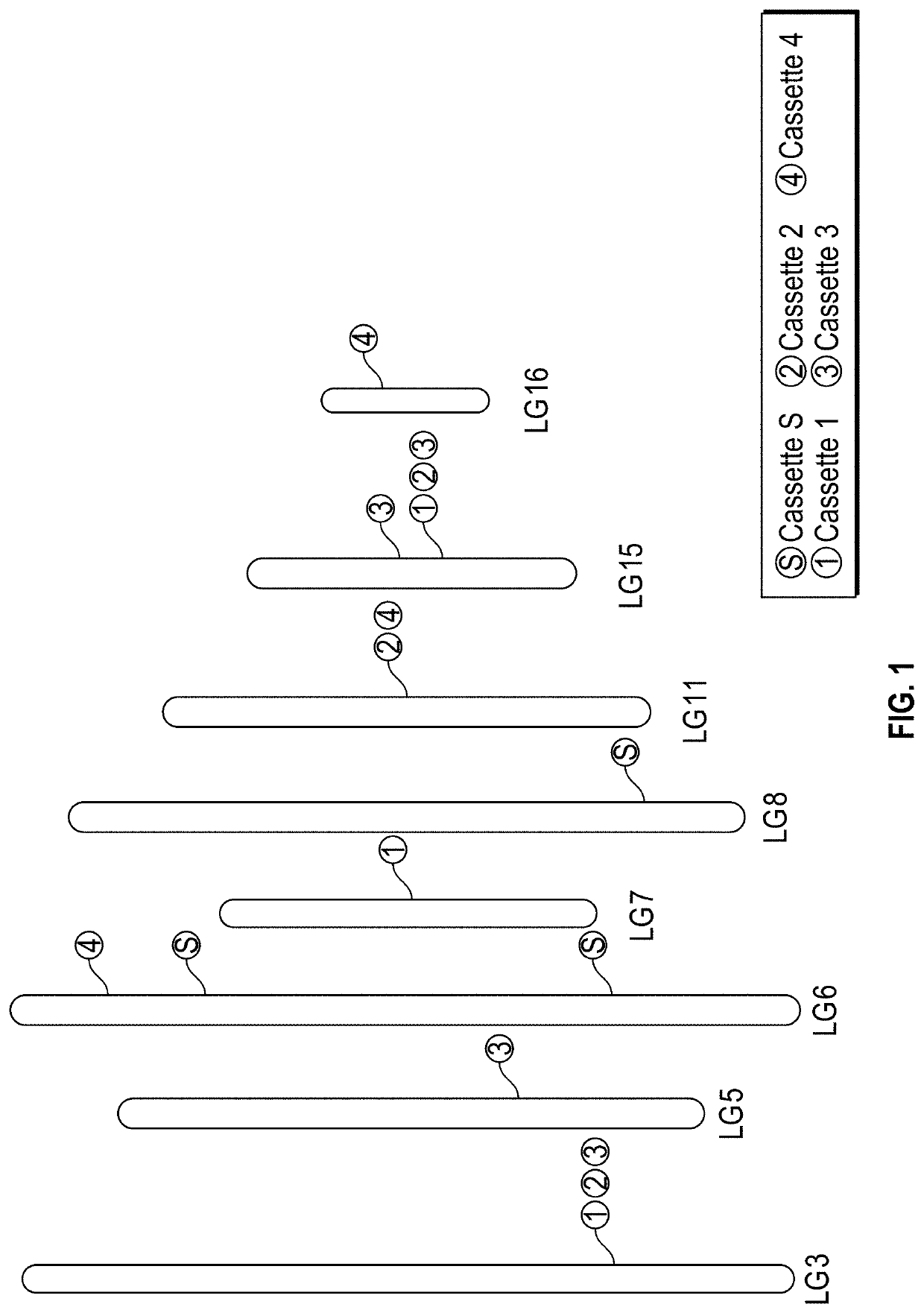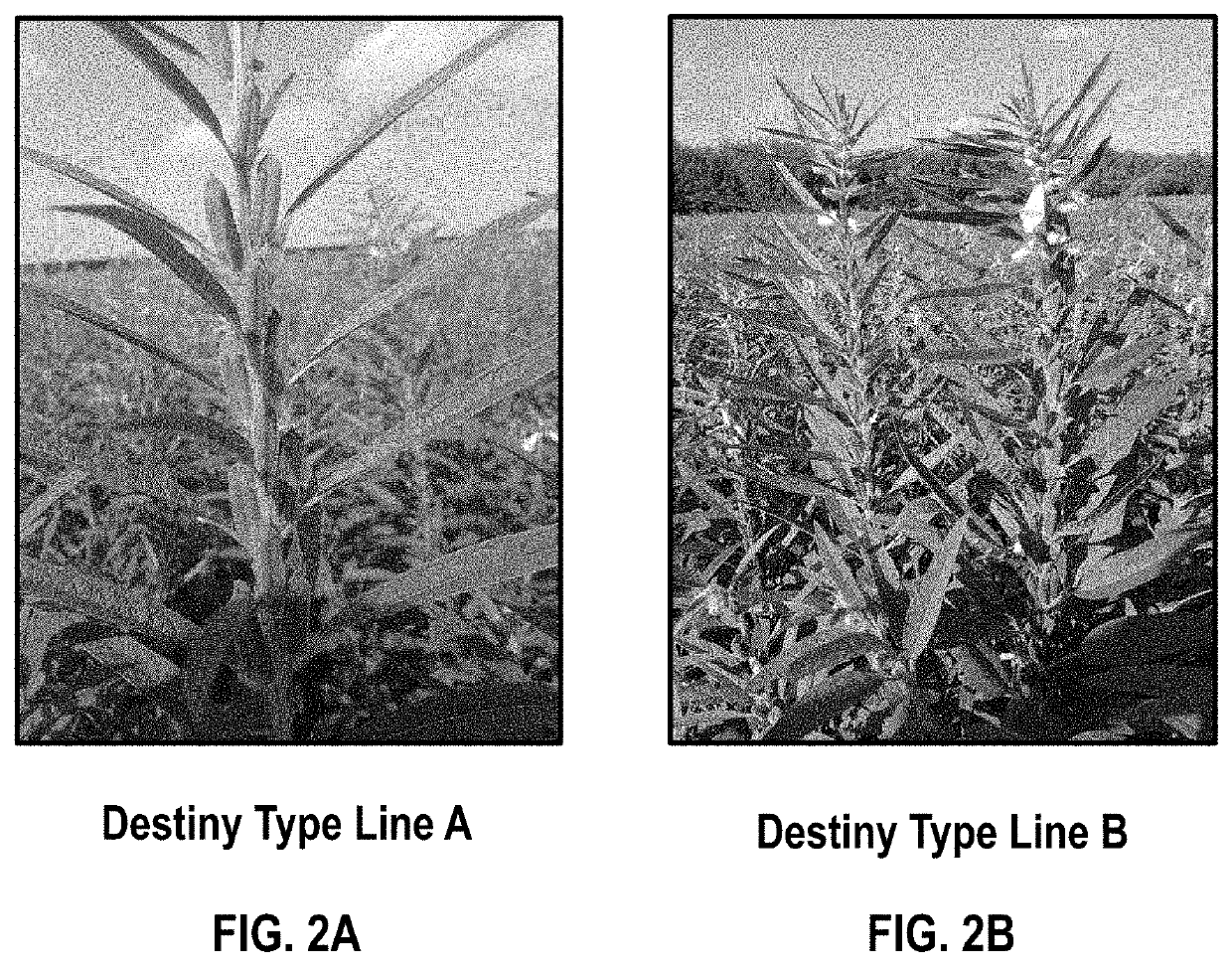Sesame plants with improved organoleptic properties and methods thereof
a technology of organoleptic properties and plants, applied in the field of sesame plants with improved organoleptic properties, can solve the problems of large variability in the organoleptic properties and seed color of sesame seeds, requiring intensive manual labor, and inconsistent results
- Summary
- Abstract
- Description
- Claims
- Application Information
AI Technical Summary
Benefits of technology
Problems solved by technology
Method used
Image
Examples
example 1
QTL for Shatter Resistant Sesame
[0193]This innovation presents a methodology of breeding sesame lines bearing shatter resistant capsules. Sesame plants grown worldwide are harvested manually. The first and foremost obstacle to complete mechanization for this important crop is the dehiscence nature of its capsules. This innovative is based on the collection of worldwide sesame lines, the creation of F2 linkage populations, massive phenotyping and genotyping of thousands of sesame lines, prediction of QTL's affecting the shattering resistance trait, and the establishing of unique marker combinations (a “marker cassette”) for shattering resistant sesame lines never found before in commercial or natural lines.
[0194]The breeding methodology is based on discovery of the Target Product Genomic Code (TPGC). The Target Product (TP) is define in advance based on market requirements; it includes a set of desired attributes (traits) that are available in natural genetic variations. The Genomic ...
example 2
Breeding of Improved Sesame Seed Plants
[0214]A Breeding Program using the method described in Example 1 was carried out using sesame plants having one or more of QLTs 1-7. Sesame plants comprising QTL1-7 were selected because of their shatter-resistant seed pod and adaptability to agronomic practices for both dryland and irrigated production methods. The plants were crossed and grown as described in Example 1 and screened for the desired color, fat and protein content and organoleptic characteristics, such as the suitability of the lines to be converted into tahini.
[0215]Preferably, the sesame plant has a protein content of from about 24.5% to 28.4% and a fat content of from about 44.5% to 50.3%. Alternatively, the sesame seed has a protein composition of about 23%+ / −2% and a fat composition of about 50%+ / −2%.
[0216]The seeds may be off-white or white in color. The technique to measure seed color uses the “Lab” color space—a color space defined by the International Commission on Illu...
example 3
Organoleptic Characterization of Improved Sesame Seed Plants
[0219]Seven sesame seed plant lines were selected in Example 2 were grown in two geographically distinct semi-arid areas with similar agronomic characteristics. Two lines, Destiny Type Line A and Destiny Type Line B were selected for further breeding and characterization.
[0220]The selected lines were all shatter resistant (e.g., the sesame plants can be harvested by machine) and have yields that are superior to Ethiopia Humera lines. Sesame seed yields can vary widely depending on agricultural practices. In Africa, sesame yields have an average yield of 267 to 500 lbs / acre. Berhane Girmay, A. University of Aksum / Hawass University. Sesame production, Challenges and opportunities in Ethiopia, December 2015. Two sesame seed lines, Destiny Type Line A and Destiny Type Line B showed a yield ranging from 600 to 1,800 lbs per acre.
[0221]The selected sesame plant lines that exhibit a branching type and / or a seed count per pod count...
PUM
 Login to View More
Login to View More Abstract
Description
Claims
Application Information
 Login to View More
Login to View More - R&D
- Intellectual Property
- Life Sciences
- Materials
- Tech Scout
- Unparalleled Data Quality
- Higher Quality Content
- 60% Fewer Hallucinations
Browse by: Latest US Patents, China's latest patents, Technical Efficacy Thesaurus, Application Domain, Technology Topic, Popular Technical Reports.
© 2025 PatSnap. All rights reserved.Legal|Privacy policy|Modern Slavery Act Transparency Statement|Sitemap|About US| Contact US: help@patsnap.com



